QuestionI recently acquired and 8 year old Thoroughbred mare that has been trained as a 4 foot jumper. Prior to me acquiring her (Addie) was turned out most of the day and ridden on a sporadic schedule. Maybe once or twice a week. Sometimes she would not get ridden for a week or two.
Therefore, I put her on a schedule of being turned out for at least two hours in the morning and lounged 30 minutes lightly mid-morning or early afternoon. She has been lounged in side reins and also in a Pessoa rig which she goes comfortably in. I ride her early evening and started very slow with reintroducing flatwork back to her. She tends to be on the strong side and when she becomes unbalanced or nervous at any gait she gets fast.
I have worked for the last two months on many many transitions from walk to halt, halt to walk, walk to trot and have gotten her to be adjustable at the trot from a medium trot, to a sitting trot to an extended trot. I have also included a lot of downward transition to the walk and halt from the trot. She has excelled at this and can remain clam and very adjustable.
I have also included some trot poles and cavalettis at both the walk and trot to allow her to be flexible. She has done this very well. It is my intension to bring her back as a BALANCED Jumper.
What I need help with is the canter. She is very strong, fast and unbalanced. She tends to get very nervous while circling and likes to pull and/or over bend and run through my hands. I have used the same methods from the walk and trot for the canter. I tried to incorporate a lot of transitions while working at the canter. She likes the rider to sit deep into the saddle and have a medium feel on both reins. I used a lot of half halts and positive reinforcement with my voice when she becomes slow and balanced. However, her progress is random. Some days are better then others but overall she needs a lot of improvement. I do not want to jumper her until her canter is balanced and adjustable. Everyday I try to canter a little longer then the day before.
I have used every bit and bridle combination from a snaffle to a gage. I currently used a cork screw bit. I have discovered that she hates French link bits and 2 and 3 ringed bits. She does also go better in a jointed Pelham, however, she becomes very dull to new bits and bridles quickly. I have tried the Mikmar snaffle bit and it work well also. She also goes in a flash noseband because she opens her mouth to evade the bit.
What are your suggestions on improving the canter? I could really use your advice on what I should be doing or practicing? This mare has a lot of talent and is a kind animal. I know she is going to be a super star, but could use an accomplished professionals help.
Please help me help her. Thanks!
AnswerHello Stacy,
Patience, my dear. Even the best ballet teacher in the world cannot produce an Anna Pavlova in 3 months. So often riders do not consider that the horse needs to develop (repeat, develop) muscles and balance. It does not come just because the rider is doing everything correctly. And then the rider, thinking that the bit is wrong, or the exercise is not right, changes things, thereby disturbing the horse unnecessarily.
Put the mare in a full cheek snaffle bit with a medium size mouthpeace...one joint. You don't need all those bit gimmicks. They only cause her discomfort and make your job more difficult. Put her on a large circle and do a trot with no reins. That's right...no reins, or at least only enough to guide her to stay on the circle. She is pulling because she wants you to hold her up...fifth foot syndrome. She must learn to balance herself with no help from you or she will always be a puller and too fast and she will never have balance. When she can circle trot both ways, holding herself up, you can then ask for canter transitions. At first let the reins still be very long so that she learns to hold herself up at the canter. This can be a bit frightening at first, but it must be done if you are to succeed. Remember it takes two to pull. Don't give her anything to pull against. Do this for at least thirty minutes or longer each day until she is calm on the circle at both trot and canter, both directions. Then and only then, pick up your LIGHT contact, but only at the canter. Do transitions from canter to trot, at the trot leaving the reins very long, even with her nose on the ground. Then when you canter, pick up your light contact. This exercise helps to heighten her balance, works her rear end to make it more flexible and stretches her top line. Even if she gets nervous and does not like it, you must still do it. Each time that you do this she will be a little bit better. Take your time and don't expect a 90 day wonder. When you are working on circles, it is the transition up and downthat does the job, not just cantering on and on. Also, something very important is that working on circles at the trot stresses the inside hind, so change directions each 10 minutes. At the canter, the outside hind carries the load.
She may become nervous and even angry when she finds that you are not goiing to hold her up. She will, of course, run on for a while, and you must sit tight without hindering or helping her, with those reins long, very long. She will keep trying to find something to lean on and you must not give it to her. Try to sit with your shoulders back and not use a very forward seat. This will make her get her hind end under her and will help with her balance. If you are forward, she will continue to run like a mouse on her forehand.
I came to dressage and combined training out of the hunt field. My first major clinic was with Nuno Oliveira. His first instruction to me when we began our 1/2 hour lesson was this: "Drop your reins and ride a circle". Of course, my hunter did not have any idea what I wanted him to do and he ran around like a banshee. Nuno would not even let me use reins for direction and my poor horse would take off on a straight line. But finally Nuno let me take enough rein to guide him. That lesson seemed to be a disaster, but it taught me what I had to do and when I took the horse back for another session, months later, he asked, "New horse, huh?" I said, proudly, "No, same horse." Now all my horses begin with that lesson and we do not proceed until they have mastered it.
On alternate days do free jumping. That is jumping in an enclosed area with no rider. Use the gymnastic grid system and raise her heights and extends the widths and spacing gradually.
It sounds like you have a willing heart and and mind and I do hope you will do right by your mare. Any help I can give further on, let me know.
Happy riding,
Dorothy

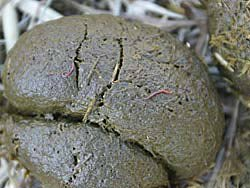 horse dropping - worms
Question
horse droppings
hello Lyn, i have attac
horse dropping - worms
Question
horse droppings
hello Lyn, i have attac
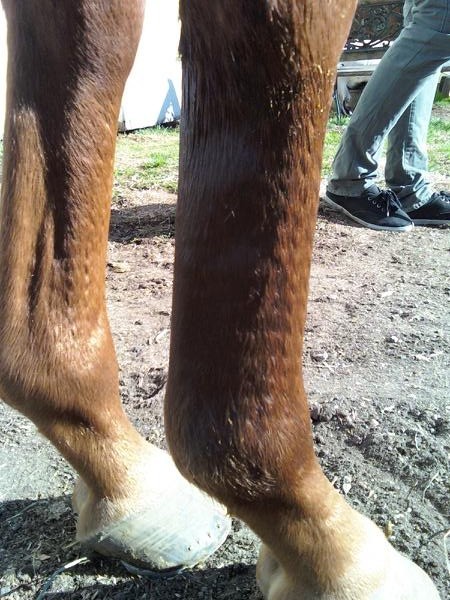 Horse Health
QuestionQUESTION: My recently retired race horse came i
Horse Health
QuestionQUESTION: My recently retired race horse came i
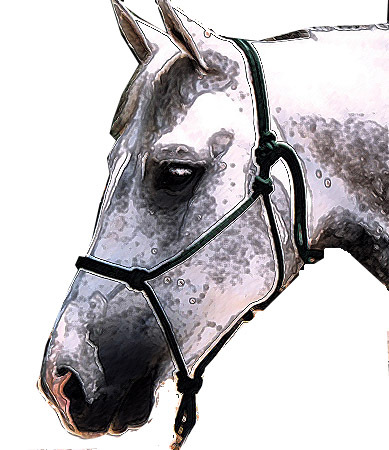 training an older arabian
QuestionHi i have an 8 year old arabian who has been un
training an older arabian
QuestionHi i have an 8 year old arabian who has been un
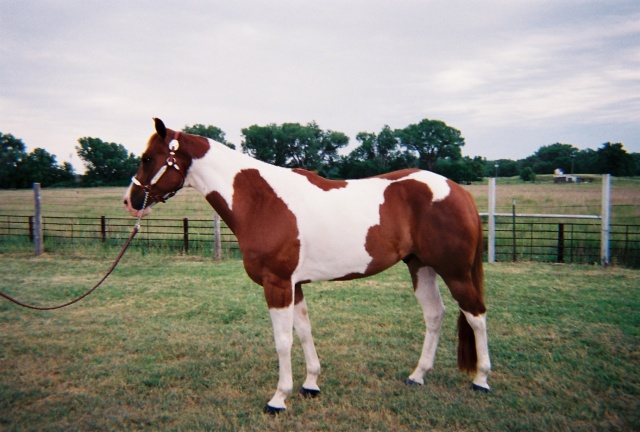 horse height
QuestionQUESTION: hi i have a three year 5 month old fi
horse height
QuestionQUESTION: hi i have a three year 5 month old fi
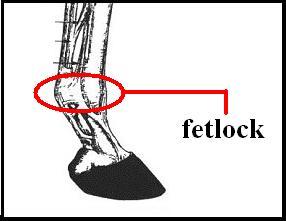 fetlock protection
QuestionQUESTION: hello madam, how to protect horse fet
fetlock protection
QuestionQUESTION: hello madam, how to protect horse fet